
Read our 2023 annual report

Knowledge Hub
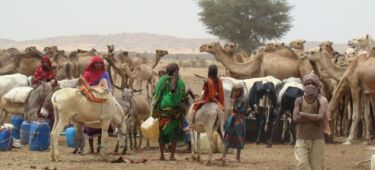
Programme de Développement Inclusif des Zones d’Accueil (DIZA) / Inclusive Development of Host Areas Programme (DIZA).
Description du programme / Programme description
Cette page contient les principaux articles et documents concernant le programme du Consortium au Tchad : Programme de Développement Inclusif des Zones d’Accueil (DIZA).
Ce programme est mis en œuvre à l’Est (Ouaddaï, Sila et Salamat) et au Sud (Moyen Chari, Mandoul, Logone Oriental) du Tchad par deux consortiums d’ONG nationales et internationales et le Haut-Commissariat des Nations Unies pour les Réfugiés (HCR).
Concern Worldwide est le chef de file du consortium DIZA-Est, qui est composé de six partenaires de mise en œuvre nationaux et internationaux répartis dans trois provinces. Le programme a débuté en novembre 2018 et se poursuivra jusqu'en janviere 2023 Il est financé conjointement par l'Union Européenne et l'Agence Française de Développement (AFD).
____
This page contains key articles and documents concerning the Consortium Programme in Chad: Inclusive Development of Host Areas Programme (DIZA).
The programme is implemented in the Eastern Provinces of Ouaddaï, Sila and Salamat and in the Southern ones of Moyen Chari, Mandoul and Logone Oriental by two consortia of national and international NGOS as well as the United Nations High Commissioner for Refugees (UNHCR).
Concern Worldwide leads the DIZA-Est consortium, which is made up of six national and international implementing partners across three provinces. The programme started in November 2018 and will continue until January 2023. It is jointly funded by the European Union and the French Development Agency (AFD).
Partenaires du Consortium DIZA-Est / DIZA-Est Partners
Ouaddaï
Fédération Luthérienne Mondiale et l’Association des Témoins d'Urgences et des Actions de Développement / Lutheran World Federation and l'Association des Témoins d'Urgences et des Actions de Développement
Sila
Concern Worldwide et l’Association pour la Promotion des Libertés Fondamentales au Tchad / Concern Worldwide and l'Association pour la Promotion des Libertés Fondamentales au Tchad
Salamat
Fondazione ACRA et l’Association des Jeunes pour le Progrès et le Renouveau du Salamat / Fondazione ACRA and l'Association des Jeunes pour le Progrès et le Renouveau du Salamat
Cartes DIZA-Est / DIZA-Est Maps
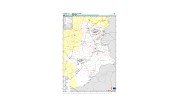
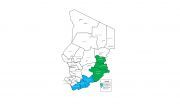
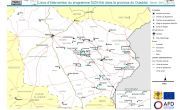
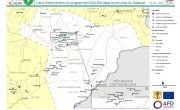
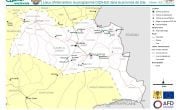
Contexte / Overview
Depuis 2017, le Tchad est le premier pays qui accueille le plus grand nombre de réfugiés par rapport à la densité de sa population en Afrique. Entre 3 et 4% de la population tchadienne est composée de réfugiés. En plus de ces réfugiés, le Tchad accueille également de nombreux retournés qui ont fui au Soudan (Darfour), en République Centrafricaine, au Cameroun et au Nigeria à différentes périodes et qui sont maintenant de retour au Tchad. Les provinces limitrophes avec ces pays, déjà caractérisées par une extrême vulnérabilité, sont chacune impactées par ces mouvements de populations.
Pour mieux répondre à cette situation, le programme DIZA a été conçu selon le concept du Double Nexus, combinant une approche humanitaire et le développement, tout en œuvrant à la promotion de la cohésion sociale par l'amélioration des conditions de vie des réfugiés, des retournés et des communautés hôtes dans les zones d'accueil.
____
Since 2017, Chad has hosted the largest number of refugees in relation to its population density in Africa. Between 3 and 4% of the Chadian population is made up of refugees. In addition to these refugees, Chad also hosts numerous returnees who fled to Sudan (Darfur), the Central African Republic, Cameroon and Nigeria during different periods and are now back in Chad. The provinces bordering these countries, already characterised by extreme vulnerability, are all affected by these population movements.
To better respond to this situation, the DIZA programme has been designed in line with the Double Nexus concept, combining a humanitarian approach with development, whilst also working to promote social cohesion through the improvement of the living conditions of refugees, returnees and host communities in host areas.
Vidéo: Redevabilité et le mécanisme de gestion des plaintes au sein de DIZA-Est / Video: Accountability and complaints response mechanism in DIZA-Est
Les objectifs / Objectives
Le Programme DIZA à l’Est du Tchad (DIZA-Est) vise l’amélioration les conditions de vie et la résilience des populations autochtones, réfugiées et retournées dans les zones d’accueil, à travers un appui au développement local inclusif en vue de minimiser les facteurs contribuant aux tensions entre communautés, à l’instabilité et au risque d’accroissement des déplacements forcés et de conflits.
____
The DIZA programme in Eastern Chad (DIZA-Est) aims to improve the living conditions and resilience of indigenous, refugee and returnee populations in host areas, through support for inclusive local development in order to minimise the factors contributing to inter-community tensions, instability and the risk of increased forced displacement and conflict.
Resultats Attendus / Outcomes
- 1
L’accès des personnes les plus vulnérables aux mécanismes de protection sociale et service de base est amélioré / Essential community services are built or rehabilitated through Cash for Work
- 2
Les services essentiels communautaires sont construits ou réhabilités au moyen des chantiers à Haute Intensité de Main d’OEuvre (HIMO) / Essential community services are built or rehabilitated through Cash for Work
- 3
Des fonds d’investissement communautaires sont créés pour le fonctionnement et le maintien des services essentiels communautaires / Community investment funds are created for the operation and maintenance of essential community services
- 4
L’accès des populations au microcrédit est promu et les bénéficiaires coachés sur sa gestion / Access to microcredit is promoted and beneficiaries are coached in its management
- 5
L’approche des chaînes de valeur est promue dans les domaines choisis et les ressources naturelles valorisées / The value chain approach and natural resource management is promoted in the target areas
- 6
Des dispositifs et actions d’appui à la formation professionnelle et technique des jeunes et des femmes en situation de vulnérabilité sont développés / Measures and actions to support the vocational and technical training of youth and women in vulnerable situations are developed
- 7
Les capacités des populations, des autorités locales et des parties prenantes sont renforcées dans la planification des initiatives de développement, la gestion et la redevabilité participatives, y compris des finances locales / Capacity building of populations, local authorities and stakeholders is strengthened in the planning of development initiatives, participatory management and accountability, including local finance
- 8
Les échanges culturels entre les communautés sont promus pour consolider la paix et renforcer la cohésion sociale / Cultural exchanges between communities are promoted to consolidate peace and strengthen social cohesion
- 9
Les droits des réfugiés sont promus par l’adoption de la loi d’asile, l’obtention de la liberté de circulation et d’installation, la liberté professionnelle, la documentation et le statut juridique sécurisant l’investissement et l’accès à la terre / The rights of refugees are promoted through the adoption of the asylum law, obtaining freedom of movement and settlement, professional freedom, documentation and legal status securing investment and access to land
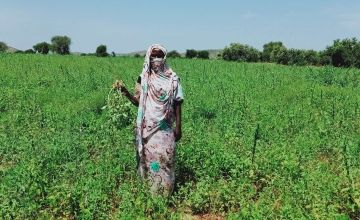
Activites cles / Key activities
- Transfert monétaire: cash inconditionnel et argent contre travail / Cash transfers: unconditional cash and Cash for Work
- Mobilisation des finances locales et promotion de l’accès au microcrédit à travers la mise en place et/ou la redynamisation des Associations Villageoises d’Epargne et de Crédit / Mobilisation of local finances and promotion of access to microcredit through the setting up and/ or dynamisation of Village Savings and Loans Associations
- Développement des moyens d’existence via la promotion des chaînes de valeur et la valorisation des ressources naturelles / Livelihood development through the promotion of value chains and natural resource management
- Formation professionnelle et suivi-accompagnement des lauréats / Vocational training and support for vocational skills trainees and graduates
- Initiatives de dialogue entre les communautés d’accueil, les réfugiés et les retournés / Dialogue initiatives between host communities, refugees and returnees
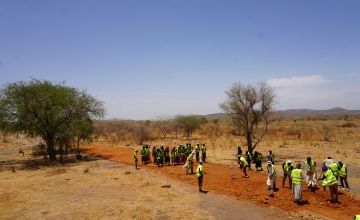
Évaluations / Evaluations
Orientations techniques / Technical Guidance
Les orientations techniques sont divisées en sections : 1) approches harmonisées, 2) guides de mise en œuvre et procédures opérationnelles standard et 3) bulletins bimestriels : / The technical guidance is broken down into sections: 1) harmonised approaches, 2) implementation guides and Standard Operating Procedures and 3) Bimonthly bulletins:
Guides de mise en œuvre et procédures opérationnelles standard / Implementation Guides and Standard Operating Procedures
Bulletins bimestriels / Bimonthly bulletins
Documents d'information / Briefing papers
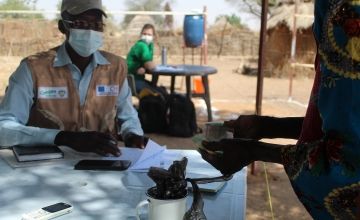
Le présent document a été élaboré avec l’aide financière de l’Union Européenne et de l’Agence Française de Développement. Le contenu de ce document relève de la seule responsabilité de Concern Worldwide et de ses partenaires et ne peut aucunement être considéré comme reflétant le point de vue de l’Union Européenne et/ou de l’Agence Française de Développement
____
This document has been prepared with the financial support of the European Union and the French Development Agency. The content of this document is the sole responsibility of Concern Worldwide and its partners and can in no way be taken to reflect the views of the European Union and/or the French Development Agency.


